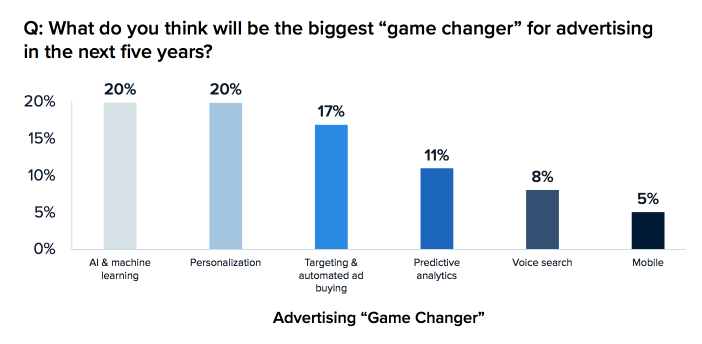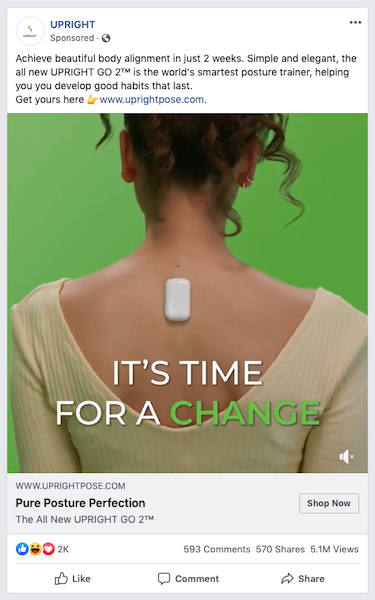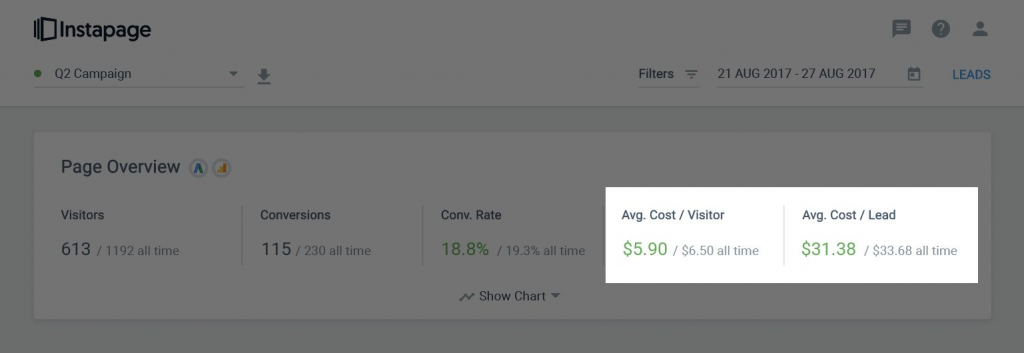You’ve made the pitch, won the deal, and signed the contract for your agency’s next advertising client. Now it’s time to design and execute the revenue-generating campaign you promised them. How do you ensure success?
Chances are you’ve run a successful campaign before, but maybe this is your first time as an agency owner, or perhaps you’re looking for ways to improve your results. In any case, embarking on a new client campaign can be as daunting as it is exciting. This guide will help.
In this article, you’ll learn what all successful campaigns have in common. You’ll also learn five of the most important steps for guaranteeing stellar results, which are ultimately what will keep your agency profitable and growing.
What do the best client campaigns have in common?
The term “marketing campaign” can be vague and cause confusion between agencies and clients. The first step is to become clear on its meaning so everyone is on the same page.
Mindbox Studios, an agency that builds custom software solutions, defines it as:
A marketing campaign is an activity that takes place outside of the day-to-day marketing tasks that are specifically designed to boost new revenue and enhance customer interaction.
Furthermore, whether you’re running a PPC advertising campaign, a social media, email marketing, or a PR campaign, the most successful ones all have a few key qualities in common:
- They have precisely defined and attainable benchmarks for success
- They’re engaging and tailor-made for diverse audiences
- They have quantitative results that prove your value to the client
The checklist in the next section outlines the exact actions you must take to achieve those qualities and execute the best campaign for your client.
The top 5 things you must do for each client campaign
This list focuses on a PPC advertising campaign as an example, but most of the steps are relevant to other campaign types, too.
1. Set measurable goals
From the outset, define quantitative goals that will serve as the campaign’s benchmarks for success. This is no place for amorphous statements such as “this campaign will increase the client’s revenue” or “we will be able to demonstrate a return on our client’s investment.”
Some examples of measurable goals are:
- “This campaign will double the client’s revenue over the previous 90-day period.”
- “This campaign will generate a 200% ROI for our client.”
- “This campaign will generate 4x the leads for the client.”
Establishing measurable campaign goals is important because it sets clear expectations for you and your client. Upon the project’s completion, there should be no question whether or not the campaign was successful.
It also clarifies which metrics you should track and report to your client.
2. Establish your client’s audiences
To be clear, this step talks about audiences, plural. Gone are the days when a one-size-fits-all campaign would be enough to reach your goals. Personalized advertising is becoming more essential than ever to execute a successful campaign.
To illustrate, in 2018, Instapage conducted research about the most important innovations in advertising:

20% of agencies believe that advertising personalization will be the biggest game-changer for the future.
To take advantage of this trend and get a leg up on your competition, you must know which audiences to target before creating personalized ads and landing pages for them.
Your client should already have several ideal customer profiles created, as these likely inform many of their business decisions. If not, you and your client should work together to define the campaign’s target audiences. Some characteristics you can use to establish audiences are:
- Their needs and wants
- Geographic location (zip code, city, state, country, etc.)
- Demographic information (age, gender, income, etc.)
- Personal interests (fitness, beauty, travel, etc.)
You can go even more granular by honing in on niche interests, behavioral history (like their purchase history), and buying intent (what search keywords they use).
3. Create engaging ads and adjust accordingly
Here are three quick ways you can add more personalization to your PPC ads and stay ahead of your competition.
Revise ad copy
One way to write ad copy that stands out is by clearly stating your unique value proposition:

In this case, Smartsheet stands out from other project management tools by highlighting the fact that you don’t have to install any software to get started. The free trial is a bonus.
This is only one of several different strategies you can use for elevating your ad copy. Be sure to have a talented copywriter on your team or as a consultant. An expert copywriter will know which strategy is best suited for different target audiences.
Use different images (or video)
Think carefully about what images you use in display or retargeting ads. Too often, you’ll come across cringe-worthy stock photos like this one:

(Example of what not to do…)
No matter how excellent your client’s service or product is, potential customers will be turned off by stock photos that are cheesy, unrealistic, or irrelevant. Instead, use product screenshots or show customers using your product. Doing this gives prospects an inside look at how the product or service functions and demonstrates it in action.
See how UPRIGHT demonstrates their posture-improving product here:

For a full run-down on how to select the best photos for campaigns, review this comprehensive guide.
Conduct A/B testing
What happens when your ads collect impressions, but their click-through rate is low? You may need to do some A/B testing.
For example, if you’re running Google Ads, the Conversion Optimizer tool can help test variations in a group of text ads. According to Instapage, this works best when you change only one variable within a group, such as the headline.
4. Optimize the post-click landing page
Agencies practicing post-click optimization design personalized landing pages that match the messaging of client PPC ads. Without it, you could be sabotaging your efforts to generate results for your client. Consider the following examples:
Example: Neglecting the post-click landing page
Suppose you wanted to buy a health-tracking accessory. You search for “fitness bracelet” and come across this ad:

Intrigued by the oxygen and heart rate-tracking proposition, you click on the ad, which brings you to this page:

On its own, a standard product page like this one is not especially compelling for someone unfamiliar to the brand. The search phrase “fitness bracelet” doesn’t match the user’s purchase intent. Meaning, the person is likely in the beginning stages of researching options what fitness bracelets are available. They are likely not in purchase mode to buy now from the example above.
Furthermore, the leading image doesn’t necessarily grab your attention, the “World’s First Medical-Grade Ring” header doesn’t draw as much attention as they should, and several outbound links that can distract the prospect from purchasing could encourage them to navigate away from the page.
Conclusion: Not a great post-click landing page.
Example: An optimized post-click landing page
The alternative is to create a unique post-click landing page that matches the messaging of the original ad, giving the prospect a more cohesive experience.
Searching for “project management tool” on Google shows this ad, and once clicked, leads to the following page:


With identical keywords such as “project management” and “#1”, it’s clear that this post-click landing page deliberately matches the ad. With that search ad connected to the page, it’s more cohesive because the prospect isn’t being asked to purchase anything on the spot. All that is requested is their email address. Plus, zero extra links entice them from navigating away. Instead, they’ll likely scroll to learn more about the product, and sign up for a free trial, the only action they can take aside from closing the window.
Conclusion: A much better post-click landing page for the user, and higher likelihood of conversion for Monday, the advertiser.
5. Track and report metrics
The goals you outlined in step one will inform what metrics you need to track throughout a campaign. There are several other metrics you can use to prove ROI to clients, including:
- Tracking the traffic value of a blog post with a comprehensive tool like Ahrefs
- Using a tool like Klaviyo to show revenue generated by an email marketing campaign
- Tracking conversion rates and cost-per-lead of a Google Ads campaign with Google Analytics
Instapage also integrates with Google Ads, helping you easily see metrics like cost-per-visitor and cost-per-lead in real-time.

There are as many as 25 different metrics that advertisers should track or at the very least be aware of. Do your research before choosing the ones that most clearly illustrate the quantifiable benchmarks you set at the beginning of the campaign.
Launch winning client campaigns every single time
The key to client campaigns with impressive results is all in how you personalize them. Having multiple audiences to target and design sub-campaigns around is perhaps the best way to ensure that your PPC ads are clicked, your post-click landing pages convert, and your clients remain happy.
Delivering results to clients is the bread and butter of your agency, but it’s not the only factor that will grow your business. Hiring top talent, pricing your services effectively, and closing more deals are just a few more of the essential elements that every successful agency needs to master. Sign up for an Instapage Enterprise demo here.

See the Instapage Enterprise Plan in Action.
Demo includes AdMap™, Personalization, AMP,
Global Blocks, heatmaps & more.
